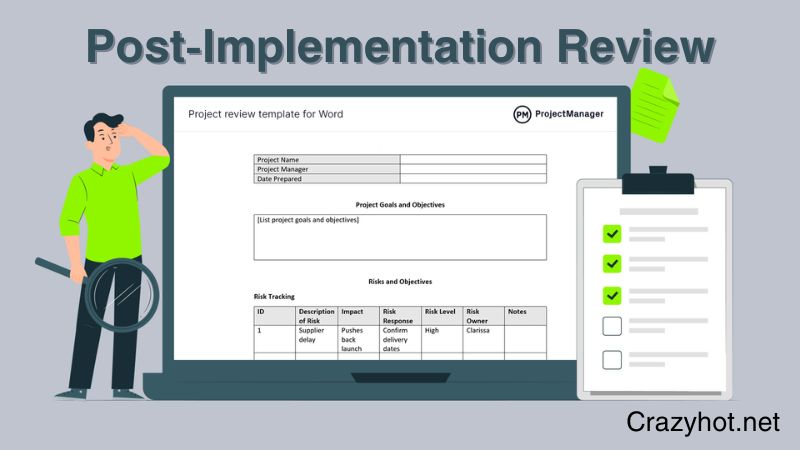In today’s rapidly evolving technological landscape, businesses are increasingly turning to cloud solutions to drive innovation, enhance agility, and optimize efficiency. However, the journey towards adopting cloud technologies requires careful planning and execution. This is where a well-defined cloud implementation project plan comes into play. In this article, Crazyhot.net will delve into the intricacies of crafting and executing a comprehensive cloud implementation project plan, outlining the key steps and considerations at each stage of the process.
Understanding the Significance of Cloud Implementation Project Planning
Before diving into the details of crafting a cloud implementation project plan, it’s essential to grasp the significance of such planning. A robust project plan serves as a roadmap that guides organizations through the complex process of migrating their infrastructure, applications, and data to the cloud. By outlining clear objectives, defining roles and responsibilities, and establishing a structured approach to implementation, organizations can mitigate risks, streamline processes, and maximize the benefits of cloud adoption.
Phase 1: Project Initiation
The journey towards cloud implementation begins with project initiation. At this stage, stakeholders come together to define the objectives and scope of the project. The cloud implementation project plan is established, laying the groundwork for subsequent phases. Key tasks include identifying stakeholders, assembling a project team, and outlining leadership roles. By fostering clear communication and alignment from the outset, organizations set the stage for a successful cloud migration journey.
Phase 2: Assessment and Analysis
With the project initiated, organizations delve into a comprehensive assessment and analysis of their existing infrastructure, applications, and data. This phase involves evaluating business requirements, identifying potential risks and challenges, and determining the type of cloud deployment that best aligns with organizational needs. By conducting a thorough analysis, organizations can make informed decisions and lay the foundation for a tailored cloud implementation strategy.

Phase 3: Vendor Selection
Choosing the right cloud service provider(s) is a critical step in the cloud implementation project plan. Organizations must conduct thorough research and evaluation to identify vendors that align with their requirements and objectives. Factors such as cost, reliability, security, scalability, and compliance should be carefully considered during the selection process. By selecting the right vendor(s), organizations can ensure a seamless transition to the cloud and maximize the value of their investment.
Phase 4: Architecture Design
The architecture design phase is where the blueprint for the cloud environment is created. Organizations define the network configuration, data storage, security measures, and disaster recovery plan. Additionally, considerations such as scalability and future growth requirements are taken into account. By designing a robust architecture, organizations lay the groundwork for a resilient and scalable cloud environment that can support their evolving business needs.
Phase 5: Migration Planning
Migration planning is a critical phase in the cloud implementation project plan, where organizations develop a comprehensive strategy and roadmap for migrating their applications, data, and workloads to the cloud. This involves prioritizing migration tasks, planning for data transfer, testing, and validation, and considering any necessary downtime or disruptions. By carefully planning the migration process, organizations can minimize risks and ensure a smooth transition to the cloud.
Phase 6: Implementation and Deployment
With the migration plan in place, organizations proceed to implement and deploy the cloud environment according to the design. This involves setting up the infrastructure, configuring networking, security, and access controls, and migrating applications and data to the cloud. Thorough testing is conducted to ensure functionality and performance. By following a structured approach to implementation, organizations can minimize disruptions and ensure a successful transition to the cloud.

Phase 7: Training and Documentation
Training and documentation are essential aspects of the cloud implementation project plan. Organizations provide training for staff on using the new cloud environment and create documentation outlining processes, procedures, and configurations. User guides and support documentation are developed to assist users in navigating the cloud environment. By investing in training and documentation, organizations empower their staff to leverage the full capabilities of the cloud.
Phase 8: Monitoring and Optimization
Monitoring and optimization are ongoing processes that ensure the health, performance, and cost-effectiveness of the cloud environment. Organizations implement monitoring and management tools to track performance, security, and cost metrics. Optimization efforts focus on maximizing resource utilization, improving efficiency, and reducing costs. By continuously monitoring and optimizing the cloud environment, organizations can ensure that it remains aligned with their business objectives and delivers maximum value.
Phase 9: Security and Compliance
Security and compliance are paramount considerations in the cloud implementation project plan. Organizations implement robust security measures to protect data and applications, comply with relevant regulations and industry standards, and regularly review and update security policies and procedures. By prioritizing security and compliance, organizations can mitigate risks and build trust with customers and stakeholders.
Phase 10: Post-Implementation Review
The post-implementation review is a critical phase where organizations evaluate the success of the cloud implementation against predefined objectives. Feedback from users and stakeholders is gathered, and lessons learned are identified. Documentation and processes are updated as needed to reflect any changes or improvements. By conducting a thorough post-implementation review, organizations can identify areas for optimization and ensure ongoing success in the cloud.

Phase 11: Maintenance and Support
Maintenance and support are ongoing responsibilities in the cloud implementation project plan. Organizations provide ongoing support for the cloud environment, monitor for issues, and perform regular updates and patches. User inquiries and issues are addressed promptly to minimize disruptions. By maintaining a proactive approach to maintenance and support, organizations can ensure the continued reliability and performance of their cloud environment.
Sum up
In conclusion, crafting a comprehensive cloud implementation project plan is essential for organizations embarking on the journey towards cloud adoption. By following a structured approach that encompasses assessment, planning, implementation, and ongoing optimization, organizations can maximize the benefits of cloud technologies and drive innovation and growth.
Throughout the cloud implementation project plan, stakeholders must remain vigilant and adaptable to evolving technologies and business requirements. By prioritizing clear communication, collaboration, and continuous improvement, organizations can navigate the complexities of cloud adoption with confidence and achieve their strategic objectives in the digital era.
In essence, the cloud implementation project plan serves as a guiding framework that empowers organizations to harness the full potential of cloud technologies and drive sustainable growth and innovation in today’s dynamic business landscape.





